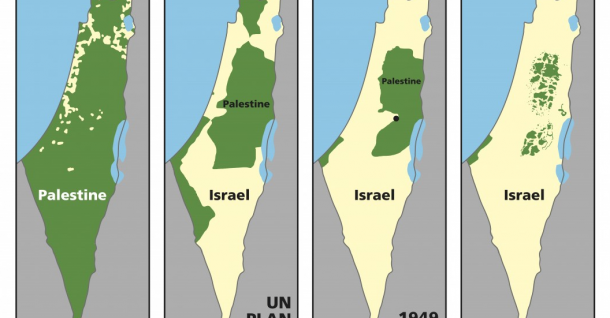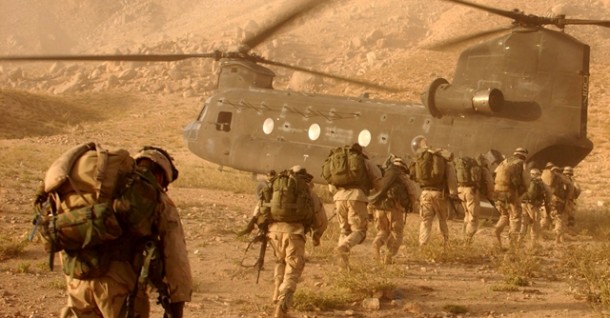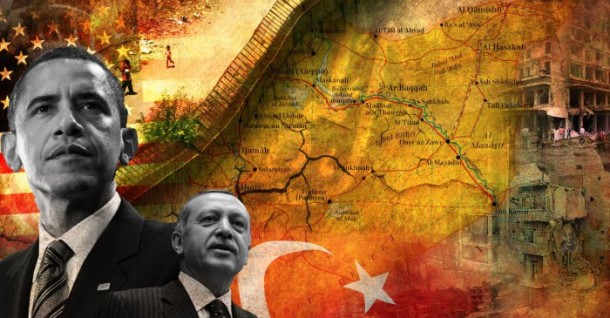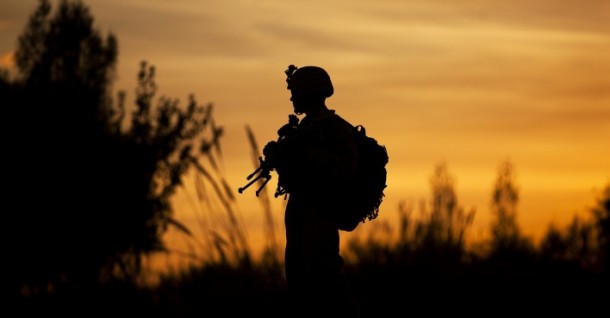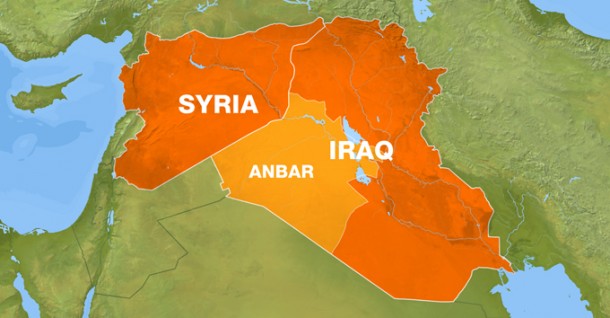Washington’s past decade of Syria policy has been driven by fears of the so-called “Shia crescent” or Iranian land bridge which would conceivably connect Tehran with the Mediterranean in a continuous arch of influence. With events rapidly unfolding in Iraq and Syria, foremost among them the defeat of ISIS and the connection of Syrian and Iraqi national forces at the shared border, that land bridge has now been established for the first time in recent history.
Plans to undermine the Syrian government were manifest as early as the mid-2000’s, when Damascus was put on notice by the US that “you are next” after the 2003 invasion of Iraq. Indeed, this was so well-known and openly talked about in diplomatic circles that CNN informed the Syrian authorities that he was being targeted for regime change in a 2005 interview:
“You know the rhetoric of regime change is headed towards you, from the United States. They are actively looking for a new Syrian leader. They are granting visas and visit to Syrian opposition politicians. They’re talking about isolating you, diplomatically, then perhaps a coup d’etat or your regime crumbling.”
The geopolitics driving the current Middle East war were framed and set in motion under the Bush administration, as reported in 2007:
“To undermine Iran the Bush Administration has decided, in effect, to reconfigure its priorities in the Middle East. In Lebanon, the Administration has cooperated with Saudi Arabia’s government in clandestine operations that are intended to weaken Hezbollah, the organization that is backed by Iran. The U.S. has also taken part in clandestine operations aimed at Iran and its ally Syria. A by-product of these activities has been the bolstering of extremist groups that are hostile to America and sympathetic to Al Qaeda.”
But now as 2017 comes to a close, the Syria-Hezbollah-Iran alliance appears victorious, and it’s the House of Saud and US-backed alliance that is fragmented and in shambles. And consistent with what predicted all the way back in 2007, the US has for years supported a extremist corridor in Syria in order to “isolate the Syrian regime”, which is considered the strategic depth of the Iraq and Iran expansion.
***
The current geopolitics of the Syrian battlefield, and US policy and interests east of the Euphrates, in reality gives the US military every incentive to pressure the Syrian Army while at the same time allowing a Daesh escape – as even a recent bombshell BBC investigation confirmed.
Following the victory of the Syrian army and its allies over ISIS group in the town of Al-Bukamal, the road has been opened for the first time since the declaration of the Islamic Republic of Iran in 1979 between Tehran, Baghdad, Damascus and Beirut and become safe and non-hostile to the four capitals and their rulers.
The United States tried to block the road between Tehran and Beirut at the level of Abu Kamal by forcing the Kurdish forces into a frantic race, but Washington failed to achieve its goals. The Syrian Army along with allied forces liberated the city, opening the border with Iraq. ISIS militants fled to the Iraqi al-Anbar desert and east of the Euphrates River where US and Kurdish forces are operating.
The United States established a new rule of engagement in the east of the Euphrates, informing the Russian forces that it will not accept any ground forces (the Syrian army and its allies) east of the Euphrates River and that it will bomb any target approaching the east of the river even if the objective of the ground forces is to pursue ISIL.
Thus, the US is establishing a new undeclared no-fly-zone without bothering to deny that this can serve ISIS forces east of the Euphrates and offer the terrorists a kind of protection. Moreover, the US-led international coalition air bombing against ISIS has reduced noticeably.
With this US warning, it is clear that Washington is declaring the presence of an occupying force in Syria, particularly as the presence of the coalition was linked to fighting ISIS as previously announced. Today ISIL has lost all cities under its occupation since July 2014 in Iraq and before this date in Syria. Therefore there is no legal reason for the presence of the US forces in the Levant.
By becoming an occupation force, the US troops expose themselves, along with the proxy Kurds operating under its command, to attacks similar to the one in Iraq and the one in Lebanon in 1982 during the Israeli invasion.
***
The United States will no longer be able to block the Iraqi-Syrian road (Al Qaim-Abu Kamal) because it is related to the sovereignty of the two countries. But this does not mean Tehran will use this route to send weapons across Baghdad and Damascus to Hezbollah in Lebanon, for two reasons:
First, Iraq has sovereignty and the Prime Minister al-Abadi will not allow any Iraqi armed party to keep its weapons because the Iraqi armed forces are responsible for holding security, especially after the defeat of ISIS in all cities. Abadi’s next step will be to disarm all Iraqi movements and organizations by the year 2018 and most likely after the forthcoming elections in May.
This means that Iraq will not allow its territory to be used to finance non-state actors, even if these have taken part in the elimination of ISIS. Neither will Abadi allow weapons to cross his country to an ally that fought alongside the Iraqi forces – such as Hezbollah – because he is not positioning himself against the United States and the countries of the region. This is not Iraq’s battle.
Secondly, Hezbollah does not need the land route from Tehran to Beirut because the sea and air links with Tehran are open through Syria and from it to Lebanon. Moreover, Hezbollah is no longer in need of additional weapons in Lebanon, especially since the Lebanese-Syrian front is unified against any possible future Israeli war.
***
As for Syria, the preparations for starting the challenging and complex rounds of negotiation to open the way for political talks which have begun in Sochi, Russia. Naturally, these talks are difficult because the United States has demands, as does Turkey, which has shown its intention to stay for a very long in the north of Syria.
In this context, the Syrian government is ready to prepare for a new constitution, on which work began several months ago. Syrian and international human rights experts and law specialists have been discussing with various groups how to establish new constitutional foundations for Syria, aiming to invite the numerous anti-Damascus parties to lay down their arms and join in the negotiations for the future of Syria.
The only problem remains with al-Qaeda in Bilad al-Sham, and the thousands of foreign fighters in Idlib, waiting for the results of the Turkish-Syrian negotiation. The war was long and complex, mainly because of shifting alliances. But the peace will be no less complex to construct if future wars based on revenge and a greedy desire for territory are to be avoided.
According to the American media
![Электронный журнал [Электронный журнал]](/magazine.static/magazine-front.jpg)

